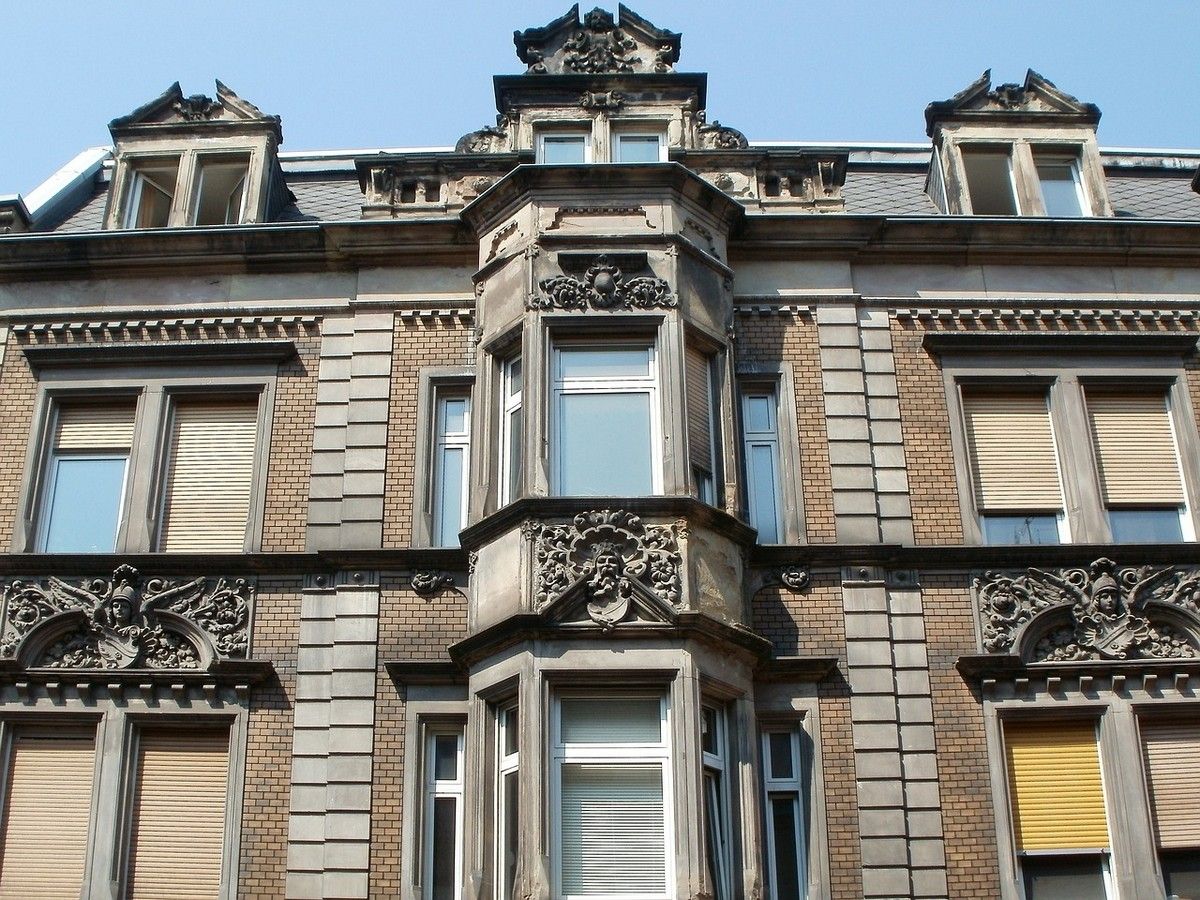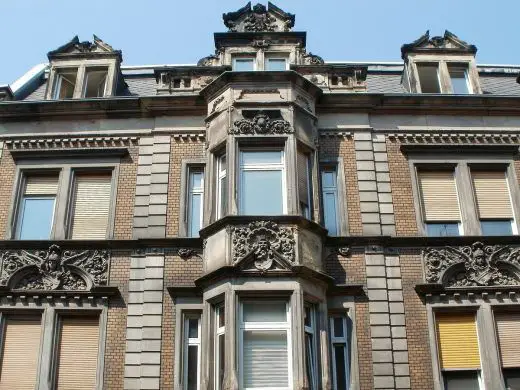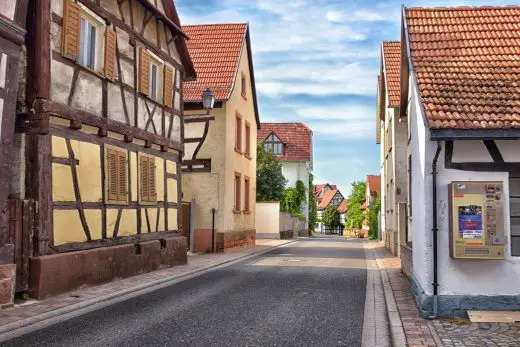Recycling building materials, Exploring Property renewal, Removing house refurb waste
Exploring Glasgow’s Architecture: Recycling Building Materials
10 April 2024
Ever wondered how cities retain their historical charm while continuously evolving? Often, it’s the result of careful architectural recycling, wherein old materials are repurposed for new constructions. Glasgow, a city with an illustrious past and an eye on the future, excels at this delicate dance between preservation and progress.
Glasgow’s Architectural Heritage
With a historically rich tapestry, Glasgow is renowned for its exquisite architecture that draws tourists worldwide. The grand Victorian buildings stand tall and majestically, narrating tales of the city’s illustrious past. Its timeline ranges from the Medieval Glasgow Cathedral to modernistic designs like the Clyde Auditorium, a testament to the city’s dynamic architectural progression.
Influential architects like Alexander “Greek” Thomson and CR Mackintosh have significantly contributed to Glasgow’s aesthetic allure and its fascinating architectural language. Their works display the captivating blend of styles that have shaped the city’s design ethos; hints of classic Greek elements intertwine with Art Nouveau flourishes.
Preserving such heritage not only supports cultural and historical continuity but also provides sustainable building practices. The principle behind it? Giving new life to previously used construction materials or simply, architectural recycling.
Architectural recycling is not a new age concept but extends back several centuries when builders would reuse stones from old structures for new ones. Nowadays, it comes with a highly-praised green credential – it reduces construction waste ending up in landfills.
Recycling in the Building Industry
In an era obsessed with sustainability, efficient resource utilization has become extremely sought-after within the building industry. From brick repurposing to glass recycling, constructors are opting for eco-friendly techniques to minimize environmental footprints.
The demolition process doesn’t merely signify the end of a building but a new beginning for its materials. Construction and demolition waste often find their way into skip bins or services like Same Day Rubbish Removal Melbourne to be disposed of responsibly.
This waste type includes bricks, concrete, and metals; materials perfectly viable as reusable resources. For instance, crushing concrete can create aggregate for road construction, offering an eco-friendly solution to the mining industry’s environmental impacts.
What’s more, the reuse culture inspired by recycling helps reduce the demand for virgin materials in new constructions, resulting in reduced carbon emissions associated with manufacturing. It’s a win-win situation!
Materials Reuse in Glasgow’s Architecture
Glasgow sets a vibrant example of architectural recycling with numerous instances of repurposing existing materials in urban design. Take the case of many Victorian buildings where materials from deconstructed structures were used to restore other edifices or construct completely new buildings.
Another illustrious example is The Lighthouse; Scotland’s Centre for Design and Architecture. Originally Mackintosh’s design for the Glasgow Herald newspaper office, the edifice underwent several restorations using reclaimed material to maintain its original essence.
These instances aren’t just promoting sustainability but are also about preserving historical integrity. By reusing materials from original buildings, architects ensure the continuation of Glasgow’s historic narrative, keeping the heart and soul of the city intact amid rapid urbanization.
The city’s reputation for cleverly incorporating reused materials into architecture only grows stronger with each project. It firmly cements Glasgow’s status as a bastion of HAZ.
Innovative Recycled Building Materials
Beyond traditional recycling, Glasgow also pioneers the use of innovative recycled materials. These materials, born from an old form, come into being through clever synthesis and technologically advanced processing methods.
For instance, consider Glassphalt, derived from discarded glass to create durable road surfaces. Or the use of plastic waste to produce Plasphalt, an asphalt alternative. Both serve as environmentally friendly answers to traditional road construction methods.
Another notable practice is Glasgow, a recycled glass aggregate mixed with resin to create mesmerizing illuminating surfaces. Used in counter tops or floor finishes, it adds not just practical value but artistic charm too.
Glasgow’s innovation streak is evident in these examples. The city is determined to take architectural recycling to new standards, setting benchmark examples for those committed to sustainable urbanization.
Eco-Friendly Building Practices in Glasgow
The quest for sustainability doesn’t end at material recycling; instead, it extends to practices that proactively reduce environmental impact. Glasgow architects often opt for green building techniques like passive solar design and efficient insulation. These measures not only save valuable resources but also encourage optimal energy consumption.
In addition to these traditional practices, Glasgow has embraced newer methods like using locally sourced materials and low energy manufacturing processes. Besides reducing transport emissions and supporting local trades respectively, both these strategies emphasize sustainability and promote responsible construction.
Furthermore, centric eco-designs include using permeable surfaces for better water management or incorporating green roofs and walls that enhance biodiversity within urban settings. These elements marry aesthetics with utility.
Leveraging these eco-conscious approaches while preserving architectural heritage paints a future-forward picture of Glasgow – A city with a profound respect for its past and an unyielding commitment towards the environment.
Importance of Material Recycling in Construction
Architectural recycling has gained much merit in modern construction practices. Rather than building materials ending up as waste, they can be efficiently repurposed, creating a greener footprint. This practice reduces the demand for new, virgin resources, thus conserving natural reserves and negating environmental damage from material extraction processes.
Equally vital is the fact that recycled materials significantly lower the greenhouse gas emissions typically associated with manufacturing new materials. For instance, reusing concrete from demolished sites reduces the necessity to burn limestone to create fresh cement. The result? Lowered CO2 emissions, a boon for eco-conscious urban development.
Moreover, it results in economically viable practices by cutting down on disposal costs while promoting a circular economic system. Essentially, cost-effectiveness and sustainability needn’t be mutually exclusive; they can go hand in hand for the overall well-being of our planet.
In terms of heritage preservation, recycling plays a significant role too. By using materials from old structures, cities like Glasgow ensure that their rich history is not lost amidst rapid urbanization. In essence, architectural recycling helps narrate stories through bricks and stones.
Examples of Recycled Materials in Buildings
The reuse of salvage does not stop at obvious materials like bricks or wood beams. There’s an array of creative uses for some surprisingly unconventional building components. Let’s dive into a few prominent and imaginative examples used worldwide:
- Upcycled Glass: Discarded glass bottles and windows can be crushed into aggregate for concrete or Asphalt (Glassphalt), or used decoratively to create captivating mosaic installations.
- Metal Scrap: Recycled metals are robust, resistant to corrosion and can be reshaped for various uses. From structural components like beams and posts to decorative elements like railings and lighting fixtures, the scope is vast.
- Reclaimed Wood: Reused wood lends a touch of rustic charm to any construction. Old timber can be repurposed for flooring, wall panels, furniture, or even dramatic ceiling beams.
Projects built using such materials display immense character while making a substantial environmental impact. As such, incorporating recycled materials within architectural design is not just about aesthetics but advocates eco-responsibility and sustainability too.
Glasgow’s Efforts in Promoting Recycling
Glasgow has a longstanding commitment towards advancing recycling in its architectural practices. Proudly bearing the banner of material reutilization, the city’s architectural fabric vividly exhibits this ethos. From its historical buildings to contemporary designs, previously used materials find recurring mentions throughout Glasgow’s urban landscape.
The city’s conscientious approach towards preserving and highlighting heritage through material reuse is commendable. For instance, critical conservation projects have focused on sourcing original or similar materials to restore the rich cultural narratives behind Glasgow’s architectural marvels.
Furthermore, an innovative edge marks the city’s efforts in creating distinctive building materials from waste. Unconventional avenues like Glassphalt and Plasphalt are examples of Glasgow’s dedication to pioneering eco-friendly practices in the construction industry. In essence, Glasgow’s approach infuses architectural recycling with creativity and foresight.
Challenges in Building Material Recycling
While the benefits of recycled building materials are clear, several obstacles impede their widespread usage. Often unanticipated complexities arise due to discrepancies between reclaimed resources and standard dimensions required by modern architecture. Further complications may stem from availability constraints or fluctuating quality of salvage materials.
Moreover, demolishing a building to recover materials consumes time and resources; this increased effort could be a deterrent to recycling compared to convenient (yet less sustainable) disposal methods. In many instances, there’s also a lack of awareness about the benefits of recycling, leading contractors towards traditional construction practices.
Addressing these challenges requires extensive planning, innovation, and most importantly, a consistent commitment to sustainability. Even with these hurdles, notable progress can be observed, with cities like Glasgow leading by example.
Future of Recycling in Glasgow’s Architecture
The blueprint for Glasgow’s architectural future pledges firm allegiance to sustainability and material recycling. The city’s progressive steps in supporting eco-friendly construction practices highlight its commitment to a green future.
One of the key focus areas is promoting the wider acceptance and practice of salvaging viable material from demolition sites. This practice not just feeds into conserving natural resources, but also promotes historic preservation, an aspect that Glasgow wholeheartedly champions.
The city is also setting precedents through innovative recycled materials like Glasglo. With growing technological innovations, further exploration of such inventive solutions can be expected. In fact, burgeoning advancements like 3D printing with recycled concrete open entirely new avenues for sustainable architectural practices.
In essence, Glasgow’s devotion to sustainable urban development lays out an inspiring path for others to follow in sustainable architecture. Its dedication fuels hope for a versatile balance of heritage preservation while pioneering eco-friendly innovation.
A Sustainable Epilogue
Marrying sustainability with urban development isn’t always easy, but cities like Glasgow are breaking barriers with aplomb. By harmoniously blending modern architectural needs with responsible recycling practices, the city elegantly showcases the delicate dance between preservation and progress. Among the countless bricks and plasters that build our world today, there’s a pressing need to foster the spirit of ‘re-use’. Here’s to celebrating cities like Glasgow, progressive yet rooted in the past, painting a sustainable blueprint for the future.
Comments on the guide to Recycling building materials, property waste article welcome
Glasgow Architecture
Major Strathclyde Building Designs – selection:
Historic Glasgow : best Glasgow architecture of the past
Comments / photos for the Recycling building materials, property waste page welcome.



